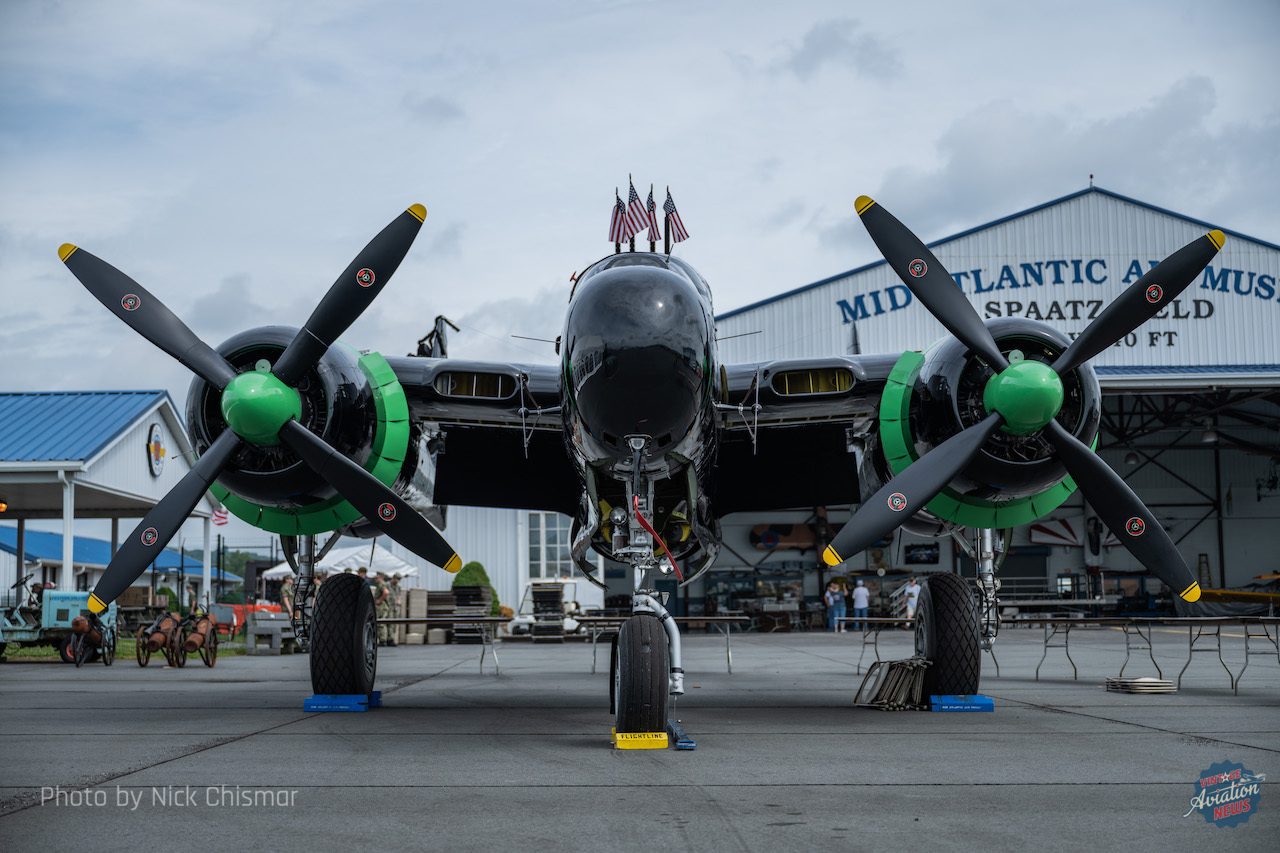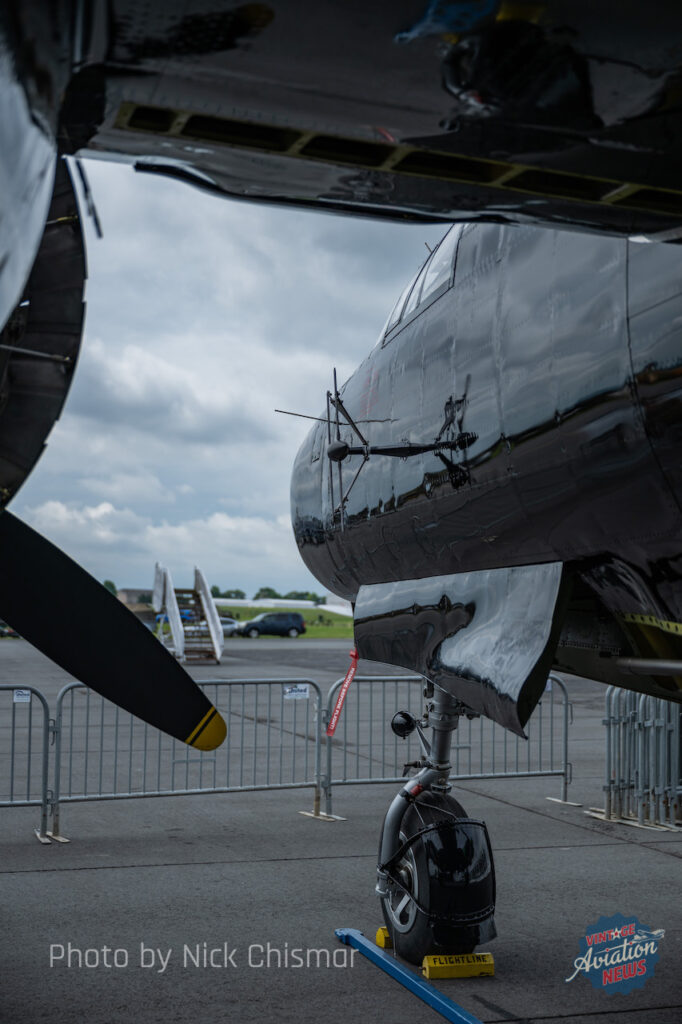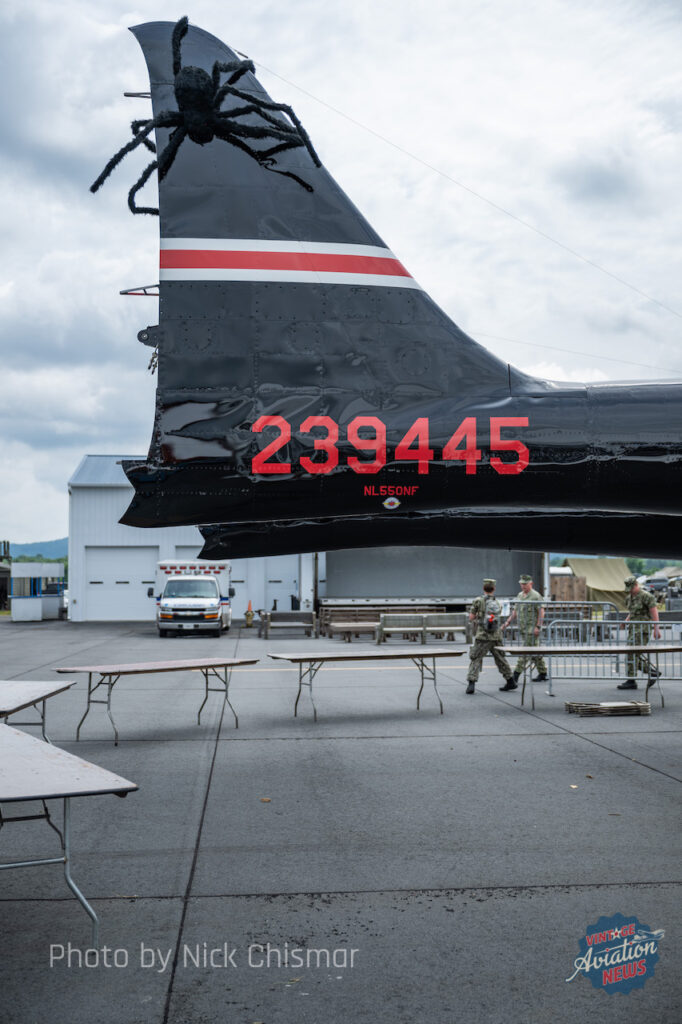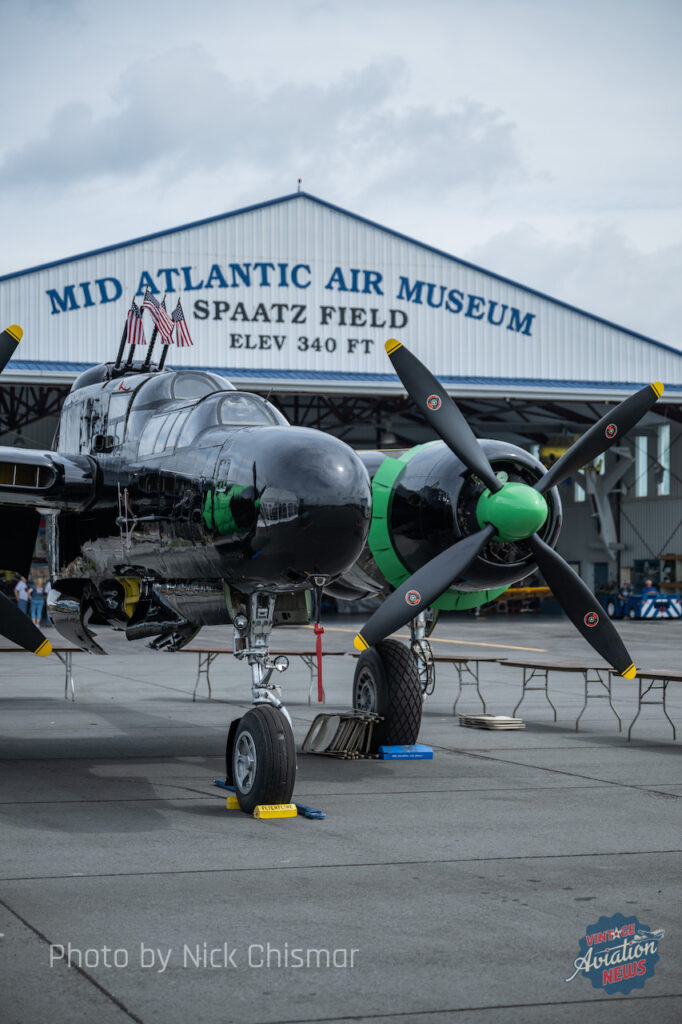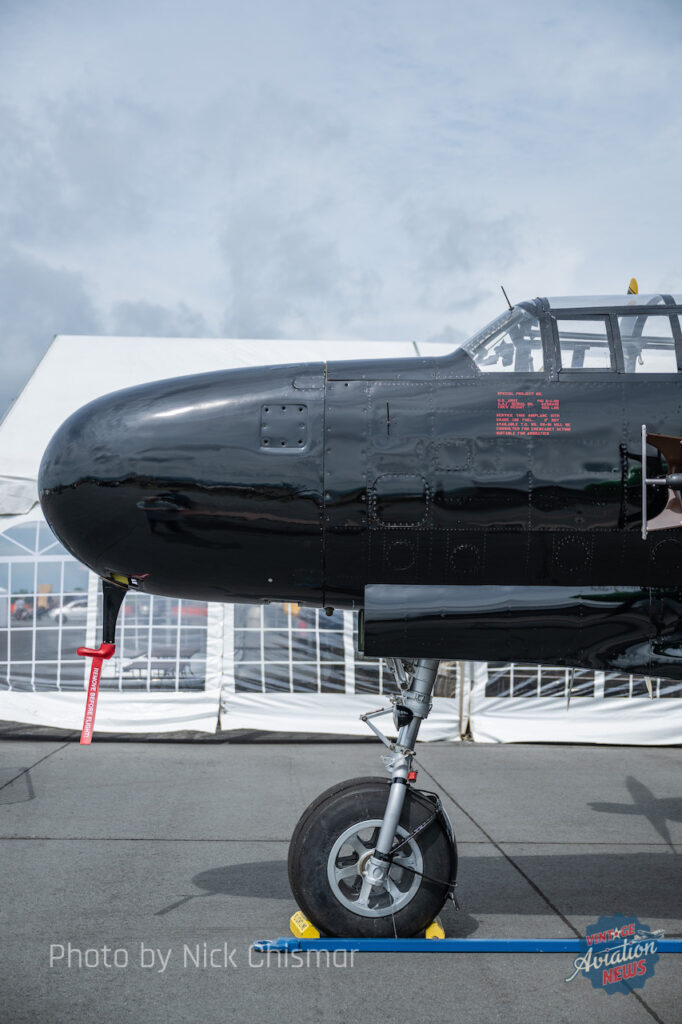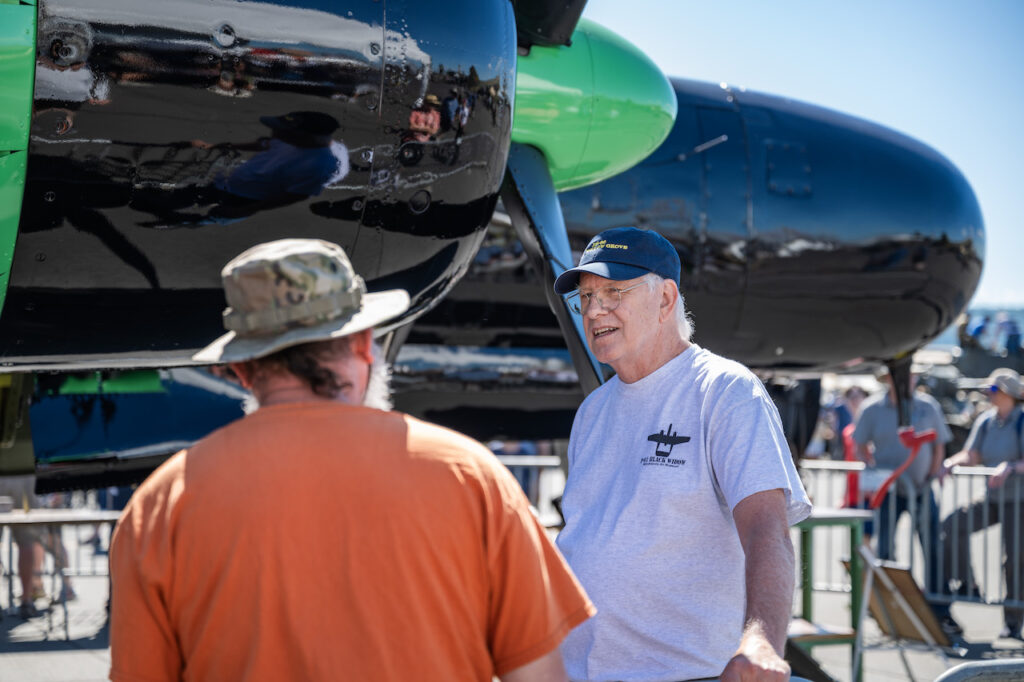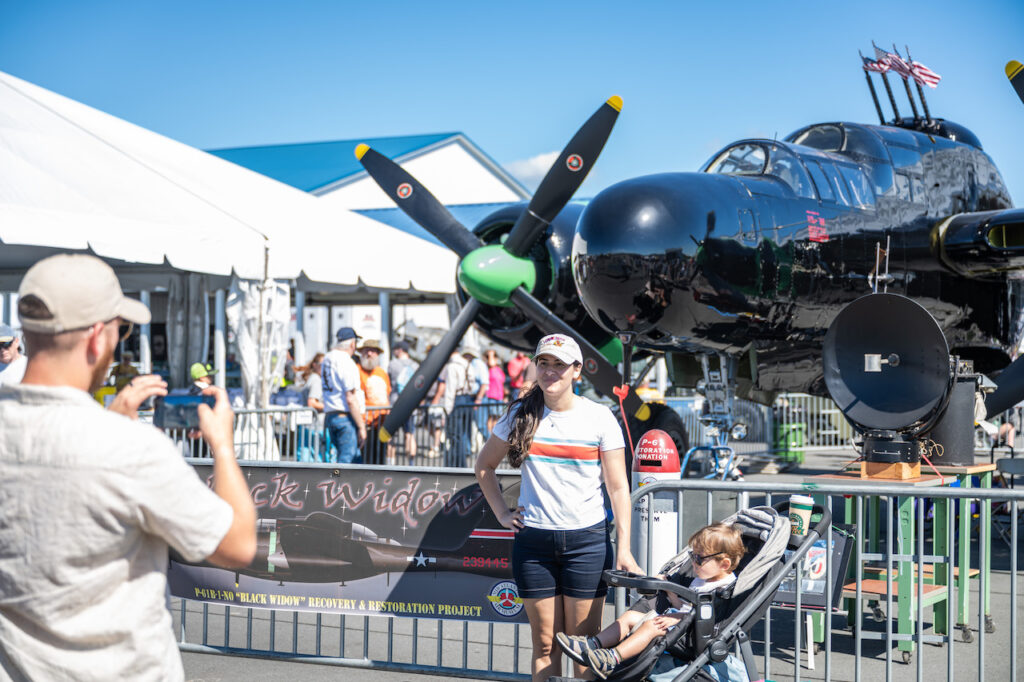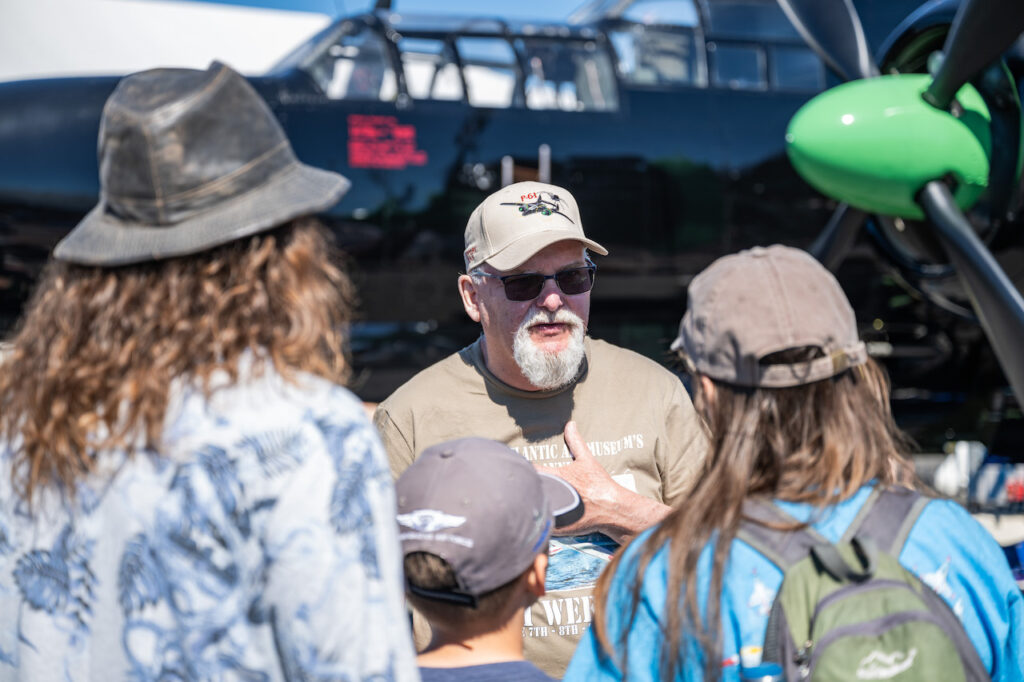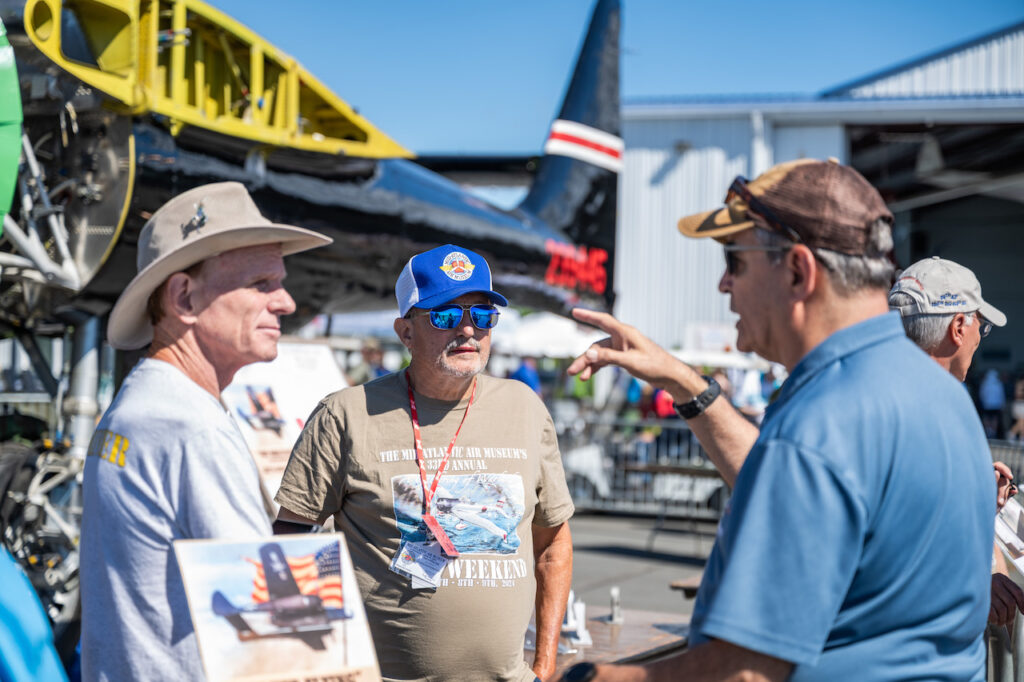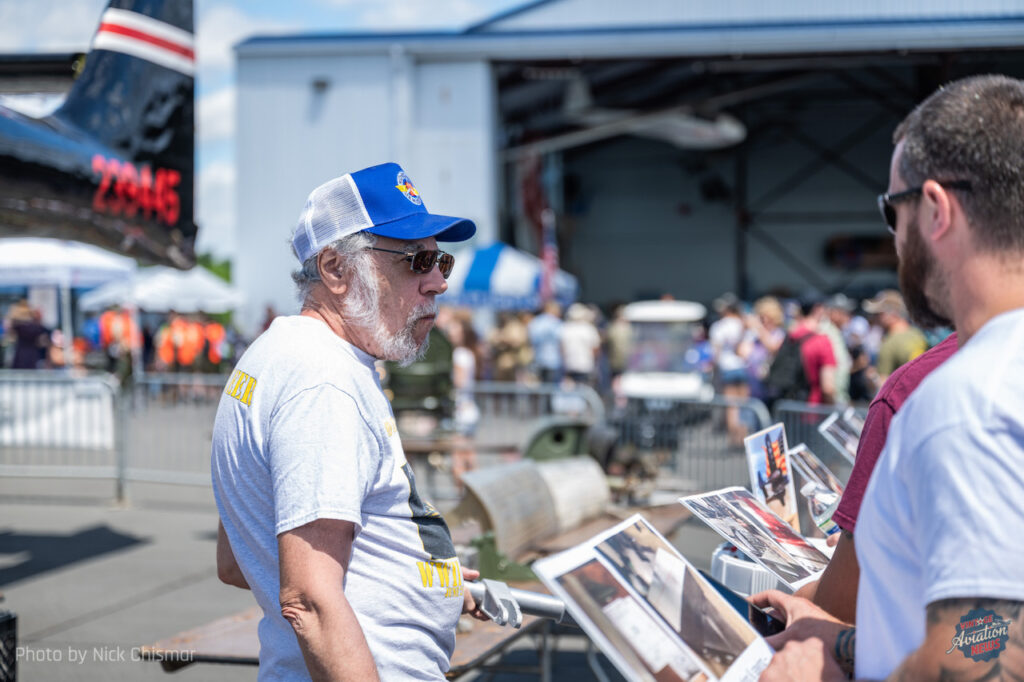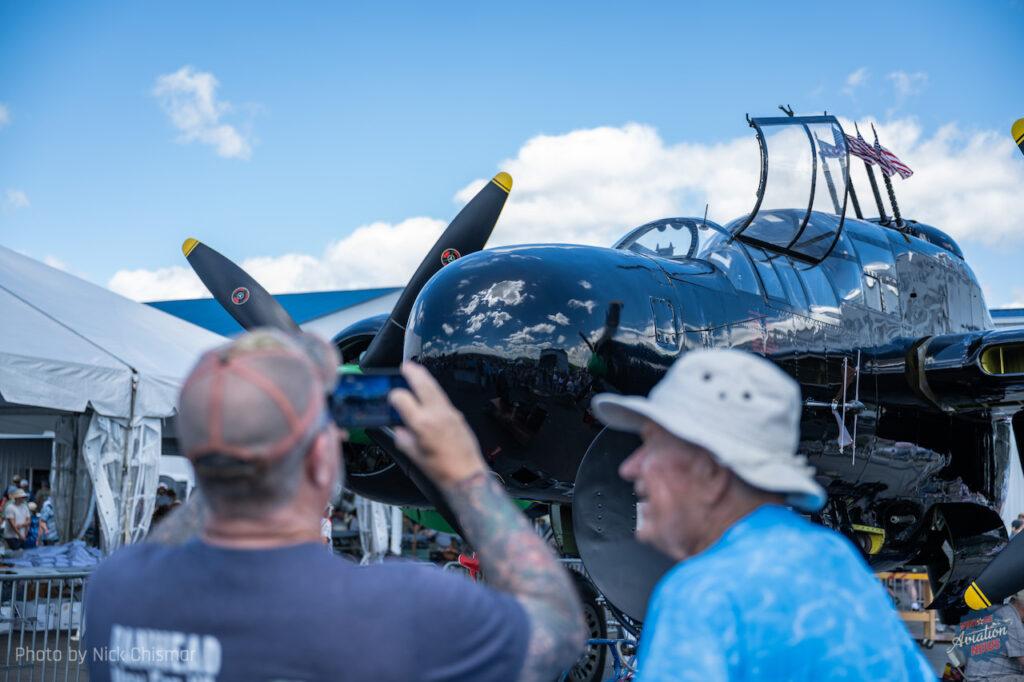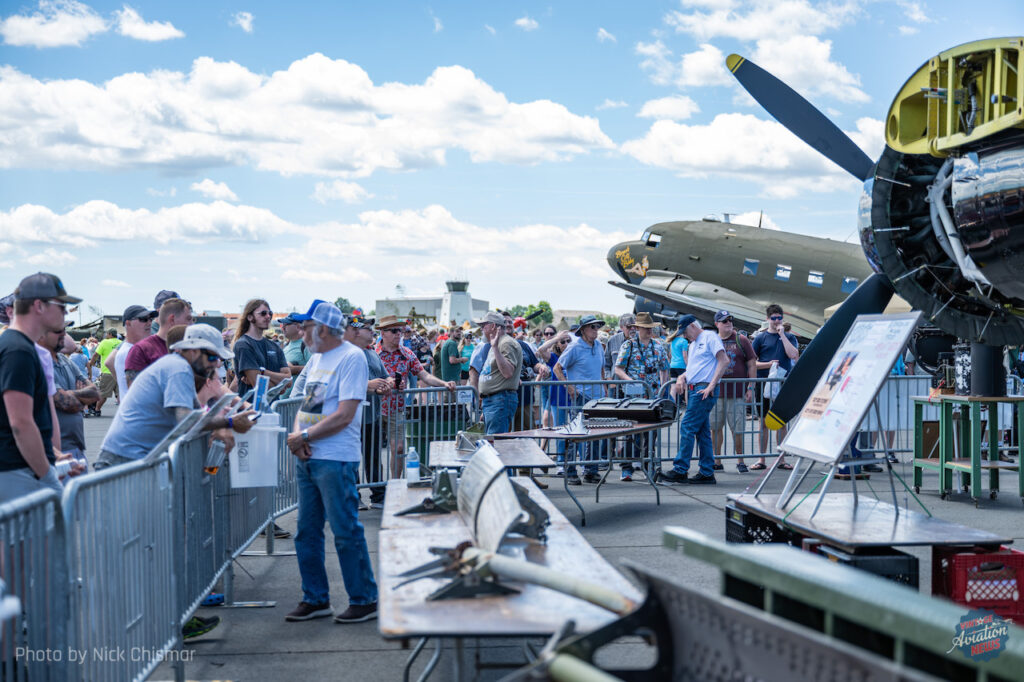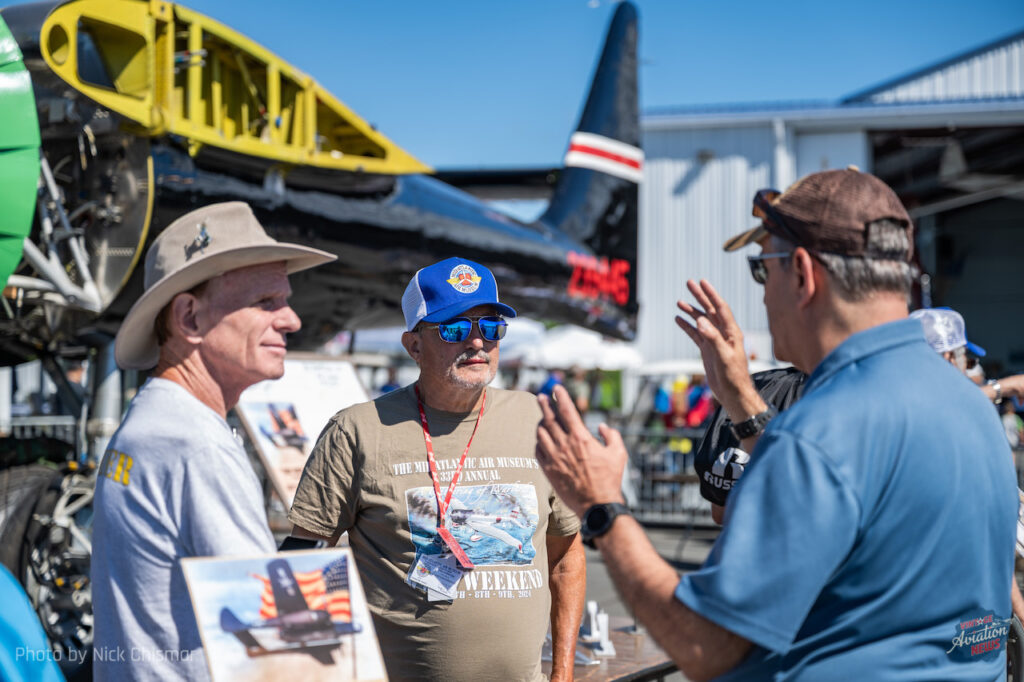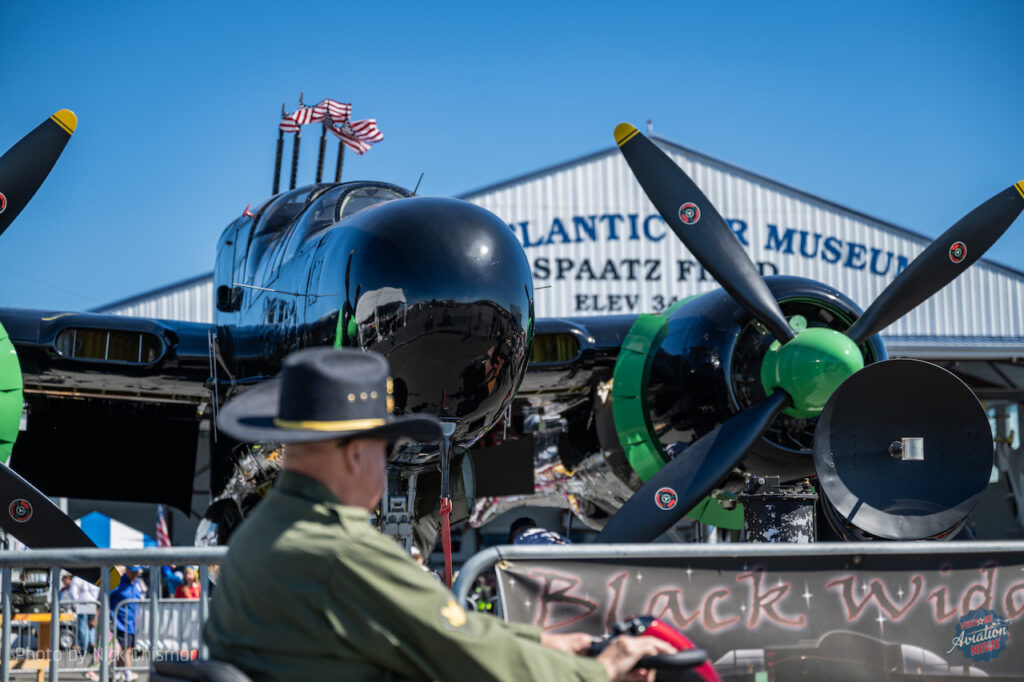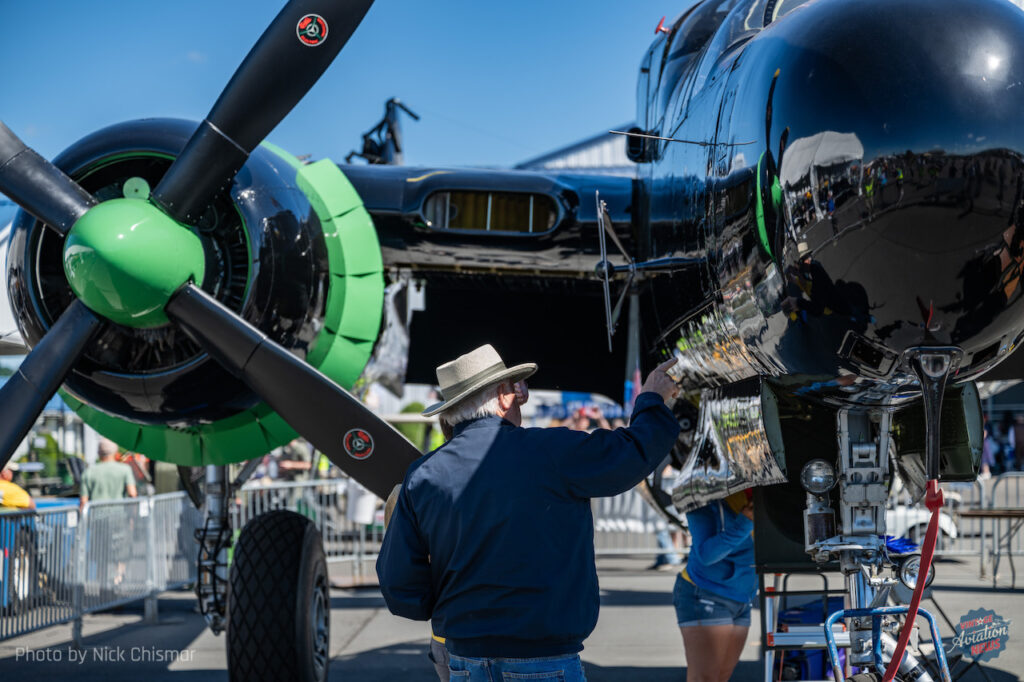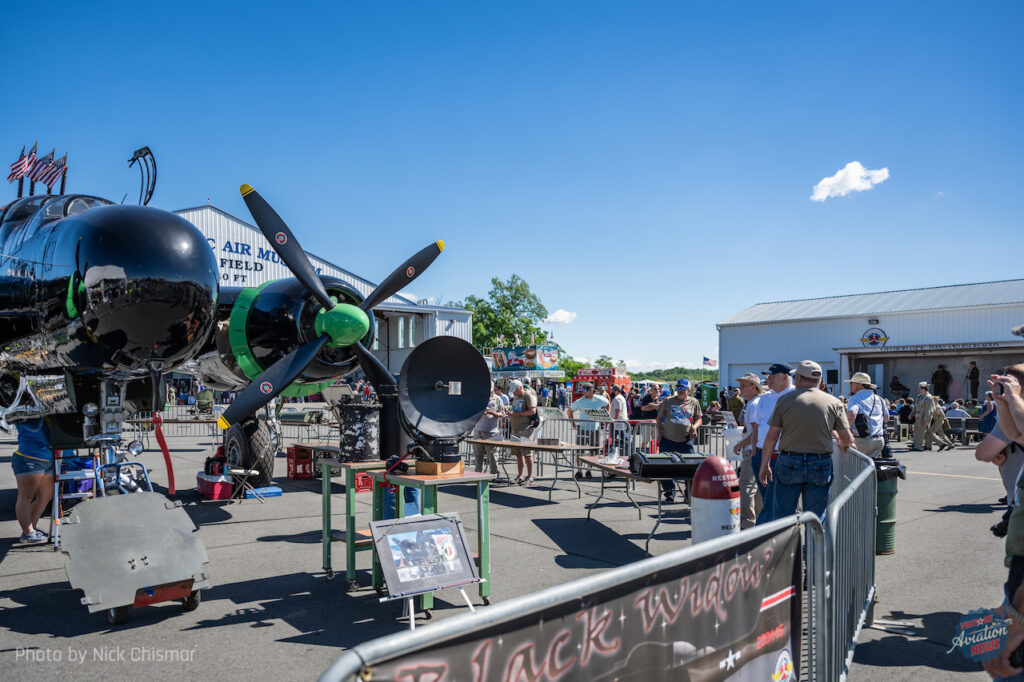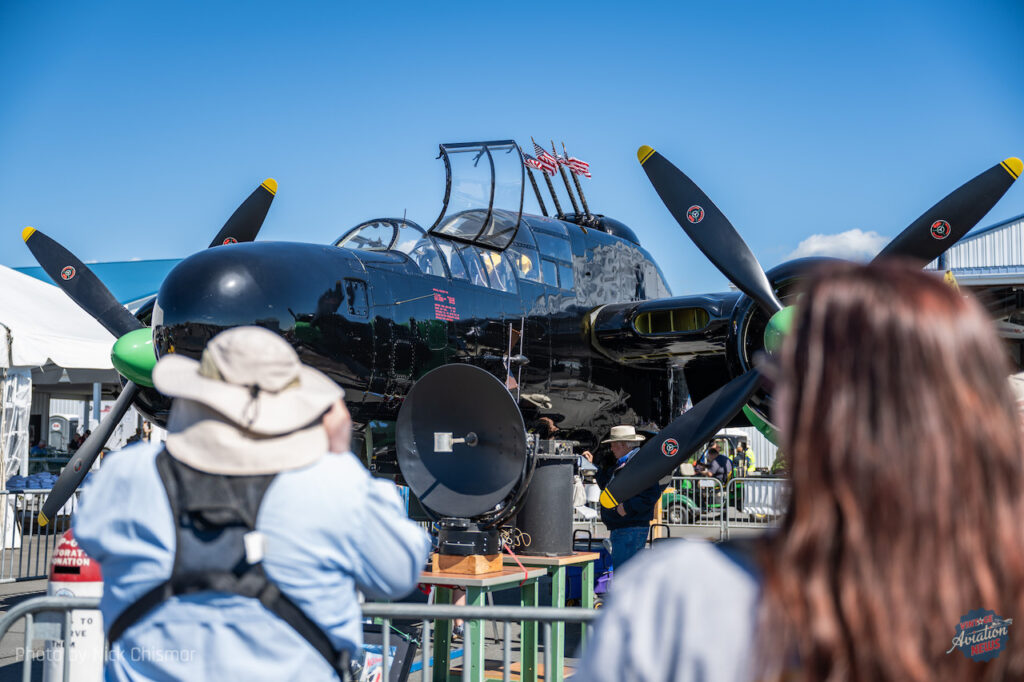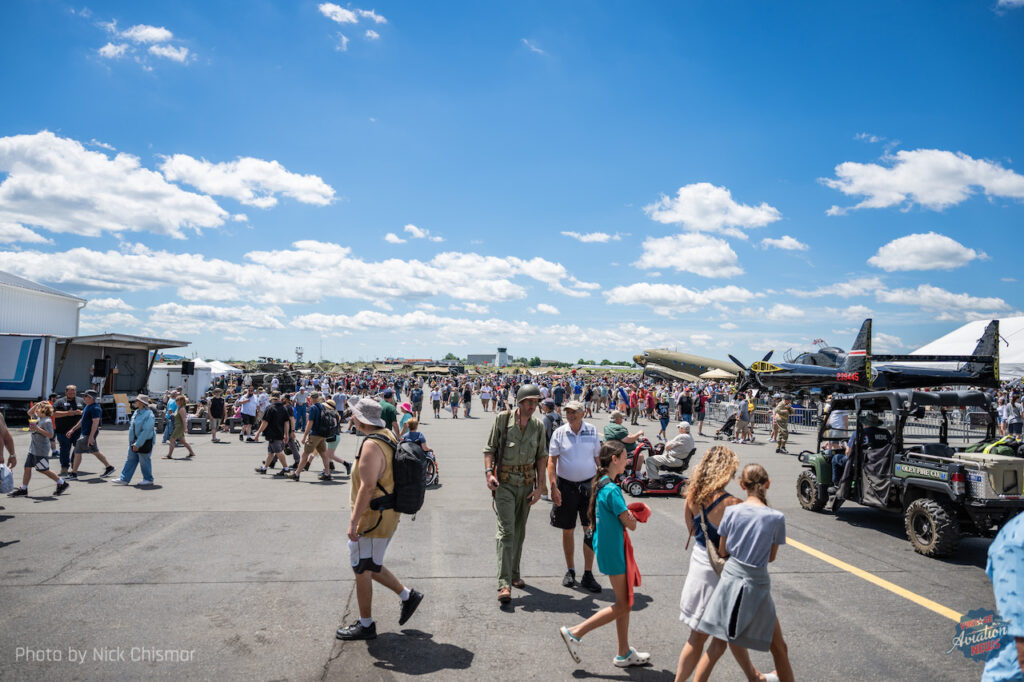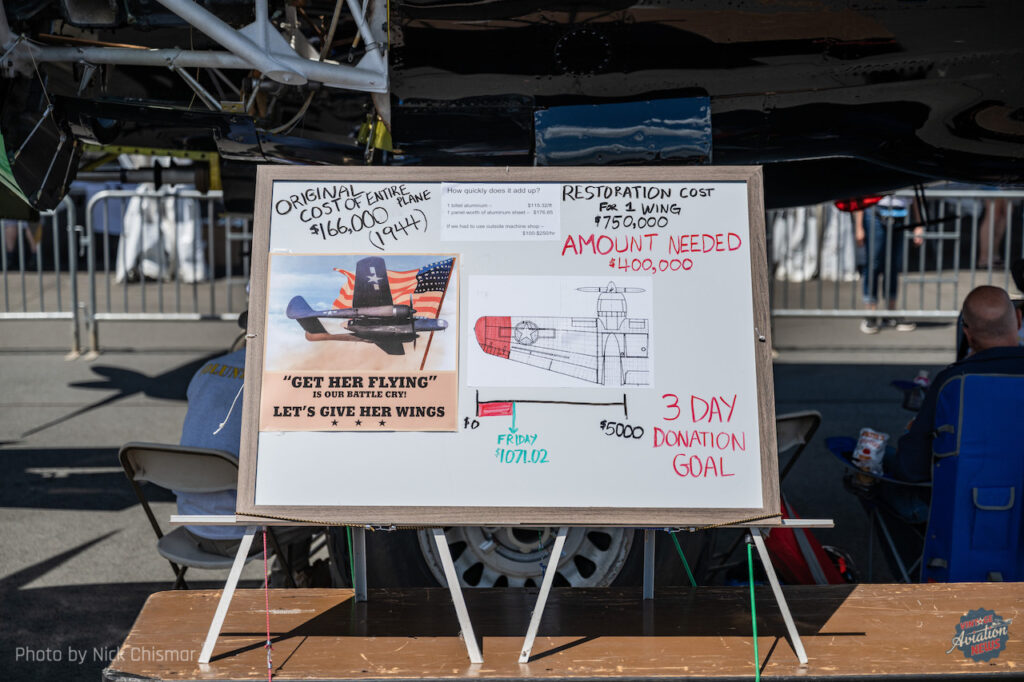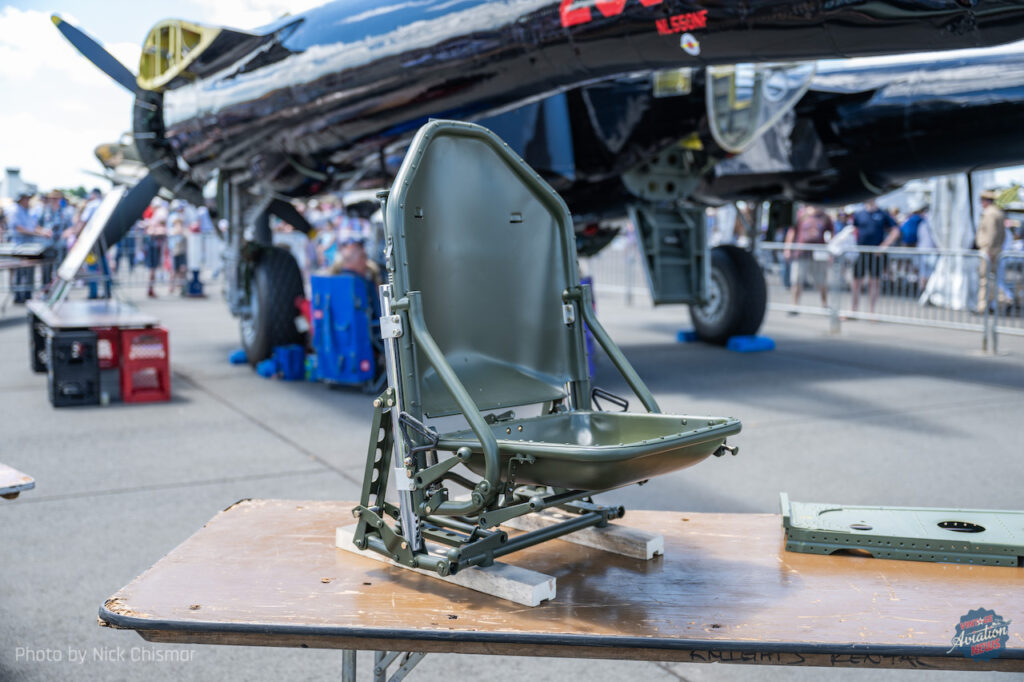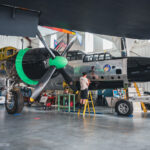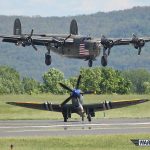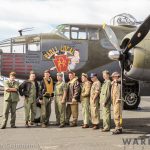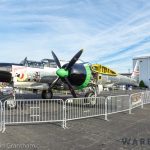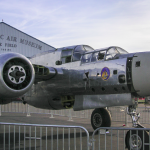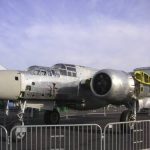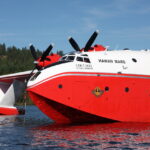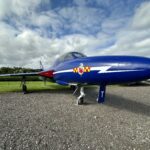On May 31st, followers of the Mid-Atlantic Air Museum were caught by surprise when the museum shared a teaser photo and later a video showing the current state of their Northrop P-61B Black Widow, s/n 42-39445, on social media. The posts quickly made their way around the aviation community, with their teaser video gathering over 116,000 views in just a few short days. What caught the attention of so many was something nobody expected, their P-61 had a new look!
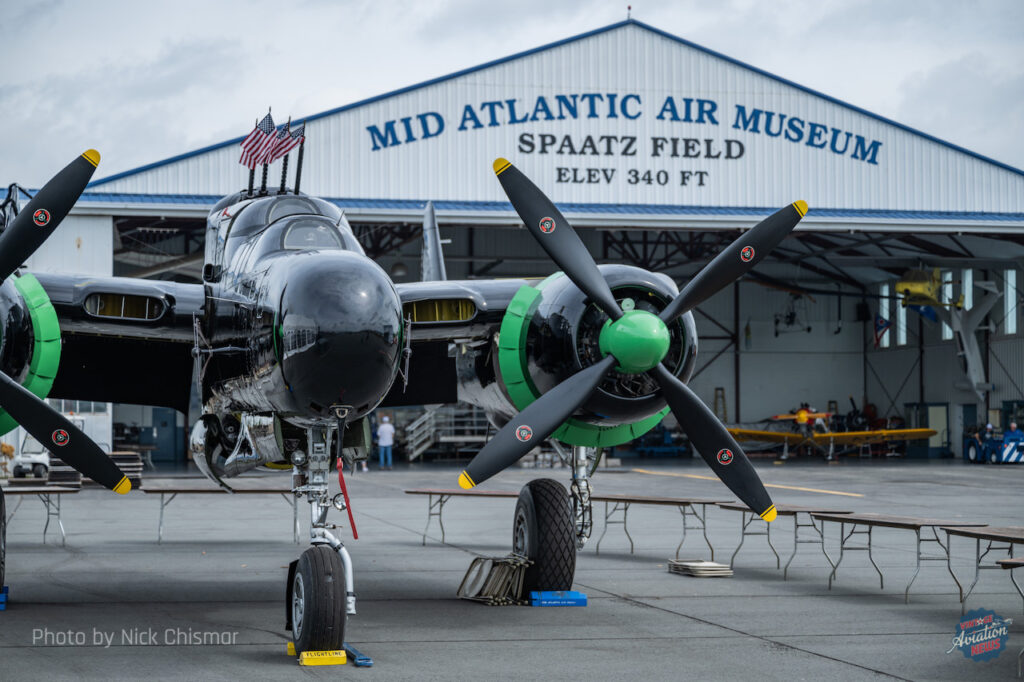
Officially debuting at their 33rd annual WWII Weekend event, the P-61 sported a fresh coat of black paint, complete with the museum’s logo underneath the aircraft’s N-Number. For many, the new paint job came as a complete surprise, but in reality, the job had already been finished nearly a week before. I was fortunate to talk to museum president, Russ Strine, the day before the big reveal to find out what painting their P-61 was like.
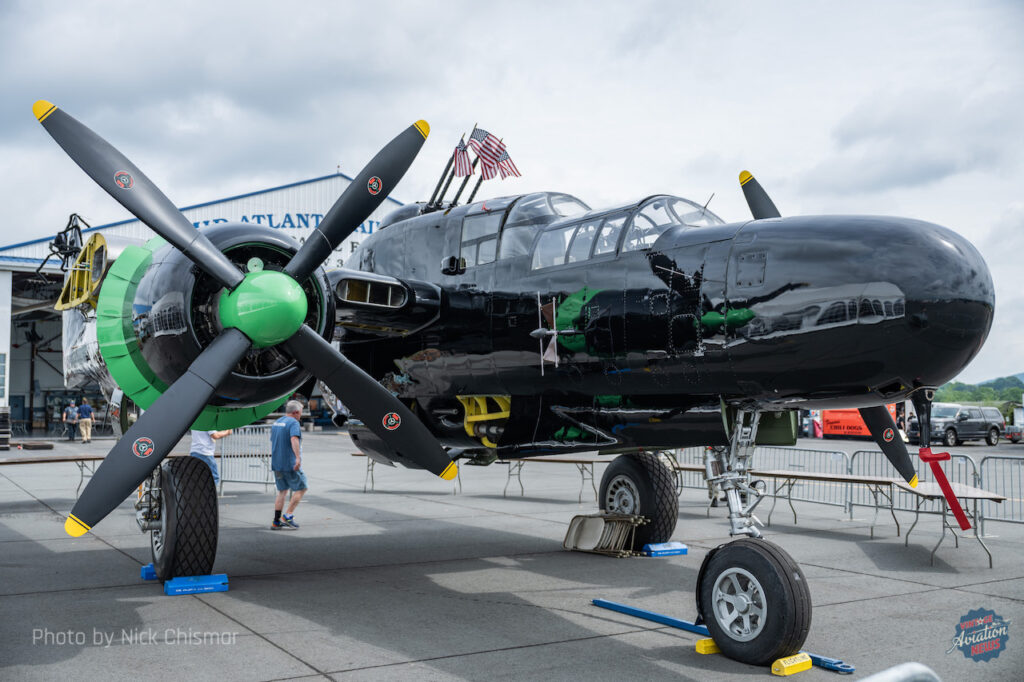
According to Russ, the initial plan was to simply paint from the wings and upward, covering just the top of the aircraft depending on how much time they had. Starting earlier than they anticipated, and with more than enough help, it was decided that they would paint the whole fuselage. It was at that point that the prep work began.
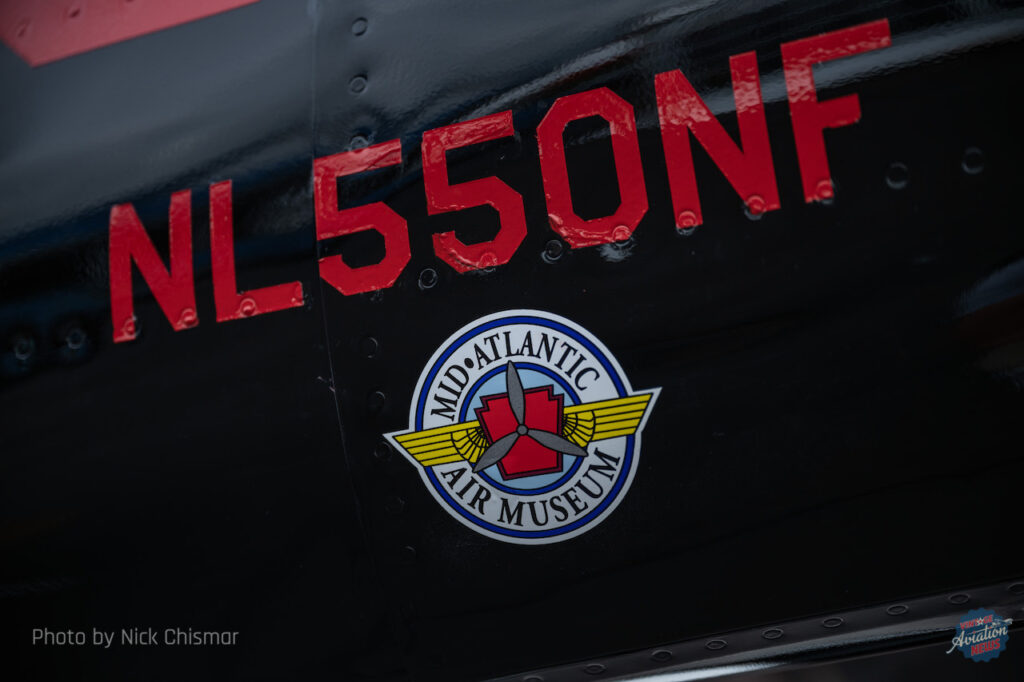
Taking what Russ said was the “better part of two days”, the aircraft would have to be cleaned and prepped. Any dust, dirt, and debris that may have accumulated while being worked on in the hangar was first washed off. Next came the process of acid etching the aluminum surface. As a crucial step in the process, acid etching cleans and scours the surface while being applied with a Scotch-Brite pad in order for the primer and paint to properly bond to the aluminum below. The aircraft was then taped off in and effort to prevent paint from covering unintended areas of the aircraft.
Using a sprayer system that does not create much overspray, the aircraft would be painted in place in the museum’s main hangar. Still, nearby aircraft and items were covered just as a precaution. Two hours later the fuselage painting was complete. According to Russ, the whole process had gone so smoothly that the decision was made to continue to the nacelles and tail booms to finish what was completed on the aircraft.
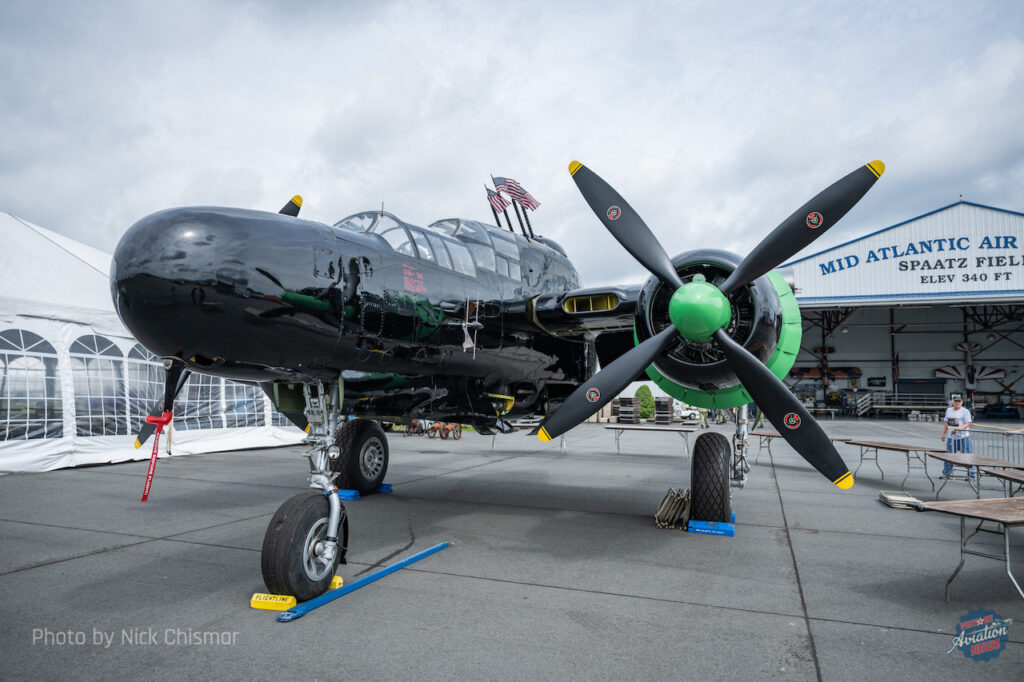
Russ estimates that 25 to 30 hours of work were put into the total job, but most of this was spent on the aforementioned prep work. According to Russ, “in total and in terms of actually spraying the paint on it, it probably took four or four and a half hours total to paint the whole airplane.”
So, now that the aircraft is painted, what is next? The elevator for the aircraft is currently covered in fabric and is nearly ready to be painted as well after a few more coats of dope. From there, volunteers are continuing their work on the fuel tanks and building the aircraft’s rudders. According to Russ, they have “virtually all of the parts done now for the wings” leaving their team with the task of assembling them when they are ready.
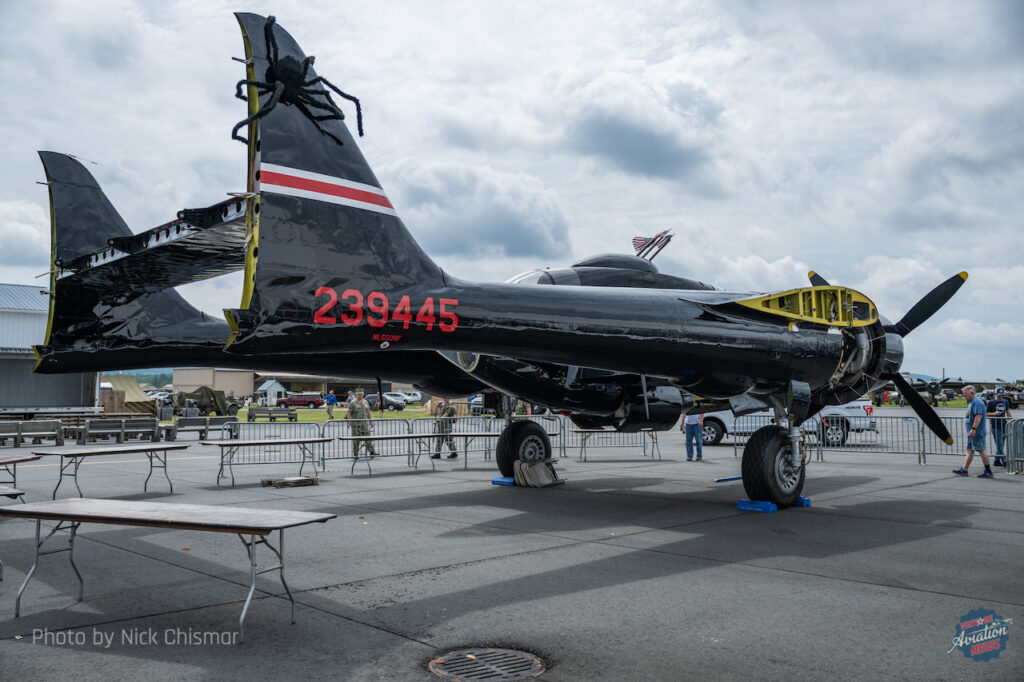
Outside of some additional paint work in the cockpit and radar operators’ position and the installation of the pilot seat, the inside of the aircraft is nearly complete. Work is continuing on the accessory cowlings behind the cowl flaps, which is another area of focus for this year.
Still, however, one of the tricky pieces of the puzzle remains finding a new nose wheel tire. Russ believes that the tire may only be shared by the Lockheed Constellation, and having not been made in several years it may be a “matter of trying to find somebody that has one and wants to turn loose of it.” Otherwise, “If not, we think that the next size smaller, which is a 30-inch tire like on the nose of a B-25 is probably what we’re going to have to [use and] change the wheel and axel and put that smaller tire on.” And so, the search for a proper tire continues.
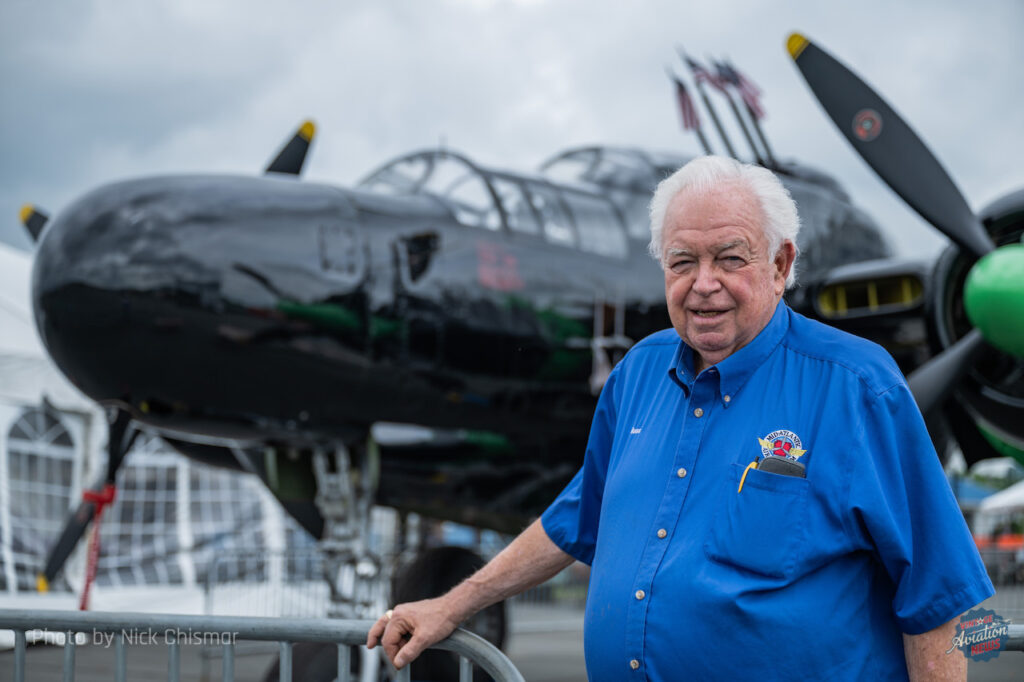
In all, the fresh paint job on the P-61 marks another step forward for the restoration project, but it is also a visible one. Much of the restoration work over the last several years has been done inside the aircraft. Electrical and hydraulic systems are done and the cockpit and interior are nearly complete. Now, however, there is a visual symbol of progress for the aircraft, and with the P-61 looking more complete than ever, the drive to complete the aircraft is greater, as well.
As with any restoration, outside support and volunteers are major factors. If you wish to support the Mid-Atlantic Air Museum, you can do so by visiting their website or museum, or becoming a member. The museum also offers a range of volunteer opportunities to get involved around the museum or in restorations. To stay up to date on events and new things at the museum, you can follow them on Facebook, Instagram, and YouTube.
I would like to thank the Mid-Atlantic Air Museum for allowing me to photograph the P-61, especially during the busy days leading up to WWII Weekend. I would also like to thank Russ Strine for once again taking the time to discuss the restoration with me.







